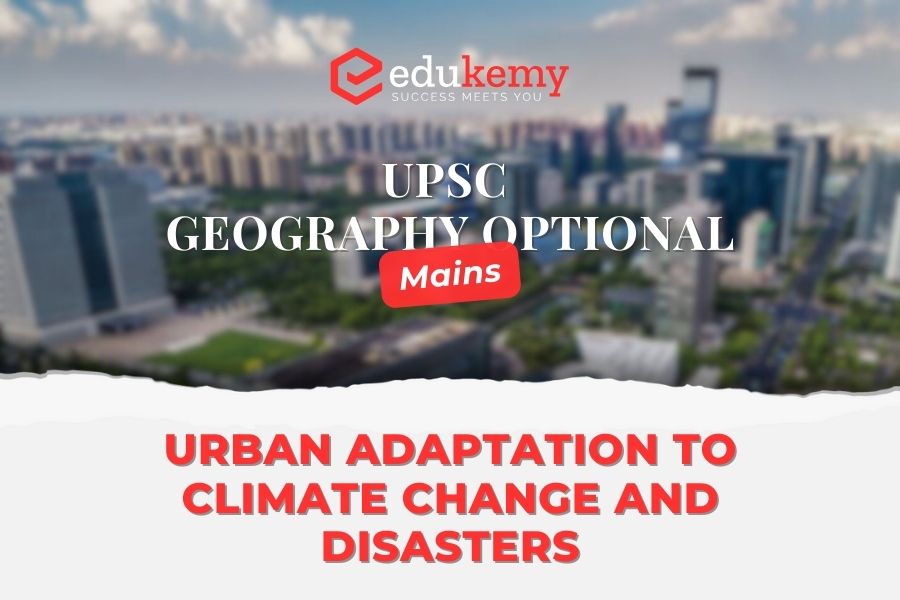
Explore the necessary adjustments in planning, management, and governance of human settlements to address evolving environmental challenges, including climate change and disaster vulnerabilities in urban areas. Adaptations may encompass implementing sustainable urban planning practices, enhancing infrastructure resilience, and integrating climate adaptation measures into governance frameworks. Additionally, fostering community engagement and participatory decision-making processes can enhance disaster preparedness and response capabilities. By prioritizing proactive measures and collaborative approaches, cities can effectively mitigate risks associated with environmental change and build more resilient, sustainable urban environments. Delve into the complexities of urban governance and management, exploring innovative strategies to confront the dynamic challenges posed by climate change and disaster vulnerabilities in cities.
Contents
Answer:
Introduction:
Cities around the world are increasingly facing the impacts of climate change and disaster vulnerabilities. With the frequency and intensity of extreme weather events on the rise, it is imperative to adapt our planning, management, and governance of human settlements to mitigate these risks. This requires proactive measures and innovative solutions to build resilient cities.
Body:
- Integrated Urban Planning: Shift towards integrated urban planning that considers climate change adaptation and disaster risk reduction as integral components.
- For example, Indian cities like Surat have adopted integrated approaches by incorporating climate-resilient infrastructure in urban development projects.
- Inclusive Governance: Foster inclusive governance structures that engage various stakeholders, including local communities, in decision-making processes.
- For instance, the city of Pune in India has implemented participatory budgeting initiatives where citizens have a say in allocating resources for climate adaptation projects.
- Investment in Green Infrastructure: Prioritize investment in green infrastructure such as parks, green roofs, and permeable pavements to enhance urban resilience.
- Chennai’s deployment of green spaces to absorb excess rainfall and mitigate flooding serves as a noteworthy example.
- Building Code Revisions: Revise building codes to ensure constructions are resilient to climate-related risks like floods, storms, and heatwaves.
- The Indian state of Odisha has strengthened its building codes post-Cyclone Fani to withstand stronger wind speeds and storm surges.
- Incentives for Sustainable Practices: Providing incentives for sustainable building practices, renewable energy adoption, and low-carbon transportation options.
- Example: Singapore offers tax incentives and grants for businesses implementing energy-efficient technologies and green building designs, fostering a culture of sustainability.
- Promotion of Low-Carbon Transport: Promote low-carbon transport modes like walking, cycling, and public transit to reduce greenhouse gas emissions and enhance urban resilience.
- The introduction of bicycle-sharing schemes in cities like Bhopal and Mysore demonstrates efforts towards sustainable urban mobility.
- Risk-Informed Land Use Planning: Adopt risk-informed land use planning strategies that restrict development in hazard-prone areas and promote mixed land-use patterns to minimize exposure to disasters.
- Mumbai’s Coastal Regulation Zone (CRZ) guidelines restrict construction along the coast to mitigate risks associated with sea-level rise and storm surges.
- Capacity Building and Knowledge Sharing: Strengthen capacity building efforts and knowledge sharing platforms to empower local governments and communities in implementing climate adaptation and disaster risk reduction measures.
- Initiatives like the National Institute of Urban Affairs (NIUA) in India provide training and resources to build resilience at the local level.
- Incentivizing Climate-Resilient Practices: Provide incentives and subsidies for adopting climate-resilient practices such as rainwater harvesting, solar energy utilization, and efficient waste management systems.
- The Swachh Bharat Mission (Clean India Mission) incentivizes cities to improve solid waste management, contributing to climate resilience.
Conclusion:
To address the challenges posed by climate change and disaster vulnerabilities in cities, a holistic approach that integrates planning, governance, and management is essential. By learning from successful examples and embracing innovative solutions, cities can build resilience and ensure sustainable development in the face of a changing environment.
In case you still have your doubts, contact us on 9811333901.
For UPSC Prelims Resources, Click here
For Daily Updates and Study Material:
Join our Telegram Channel – Edukemy for IAS
- 1. Learn through Videos – here
- 2. Be Exam Ready by Practicing Daily MCQs – here
- 3. Daily Newsletter – Get all your Current Affairs Covered – here
- 4. Mains Answer Writing Practice – here

